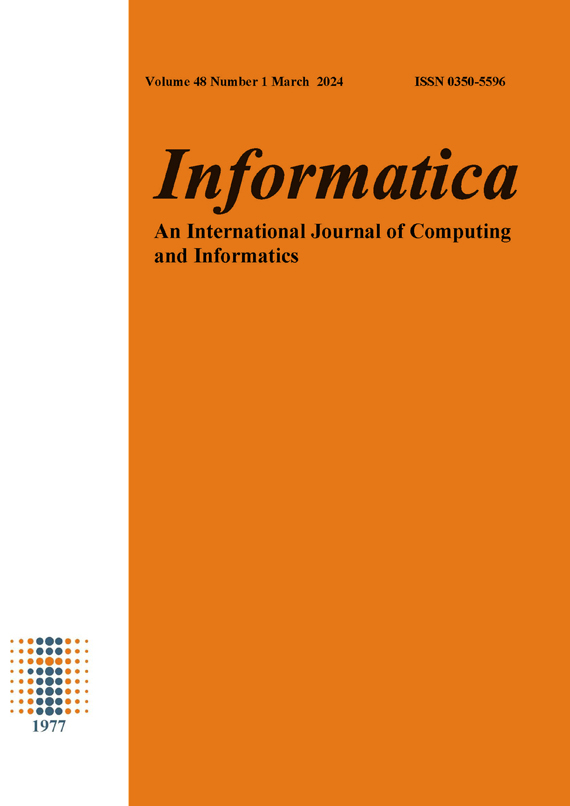Application of Agent-Based Modelling in Learning Process
DOI:
https://doi.org/10.31449/inf.v48i1.4086Abstract
With advances in information and communication technologies and rapid computing and technological progress, modeling, and simulation of real problems, has become the most important teaching and learning method in educational process. Representing and explaining processes through simulations can enable students to easier understand these processes and discover the essential properties of a system. In many situations, in learning different subjects it is not possible to experiment with real objects to find the right solutions, therefore modelling and simulation can be used to build models that represent the real systems. Agent-based modelling (ABM) is a powerful simulation modelling technique, that can be easily incorporated in learning and teaching processes. Agent based modelling (ABM) is a relatively new method compared to system dynamics and discrete event modelling. In ABM a system is modelled as a collection of autonomous decision-making entities called agents, that can interact among each other’s. In this paper, the agent-based modelling simulation is considered as a tool in educational process for learning and teaching different subjects. Anylogic software is used for some simulation examples of agent-based modelling that can be used in educational process.
References
A. Maria. "Introduction to modeling and simulation." Proceedings of the 29th conference on Winter simulation. 1997.
Ј. Banks, J. S. Carson, and B. L. Nelson, “Discrete-Event System Simulation”, Second Edition, Prentice Hall, 1996.
J. M. Aughenbaugh, C. Paredis. “The Role and Limitations of Modeling in Systems Design”, Proceedings of IMECE2004, ASME International Mechanical Engineering Congress and RD&D Expo November 13-19, 2004, Anaheim, California USA.
G. S. Fishman, “Discrete-Event Simulation: Modeling, Programming, and Analysis”, Springer, Series in Operations Research, 2001
R. Maidstone, “Discrete Event Simulation, System Dynamics and Agent Based Simulation: Discussion and Comparison”, The University of Manchester,2012
A. Borshchev, I. Grigoryev, “The Big Book of Simulation Modeling MultiMethod Modeling with AnyLogic 8”, 2020.
F. Klügl, A.L. C. Bazzan, “Agent-Based Modeling and Simulation”, Ai Magazine, 33(3), pp. 29-40, 2012
O. Chernikova, N. Heitzmann, M. Stadler, D. Holzberger, T. Seidel, and F. Fischer. "Simulation-based learning in higher education: a meta-analysis." Review of Educational Research 90, no. 4, 2020: pp.499-541.
C.J. Brigas, "Modeling and simulation in an educational context: Teaching and learning sciences." Research in Social Sciences and Technology 4, no. 2, 2019 pp: 1-12.
C. Zambon, Antoni., Jana R. Saito, William H. Yonenaga, and Feginaldo S. Figueiredo. "The Introduction of Simulation as Teaching and Learning Tool." In ICSTM. 2000.
H Stančić,., S. Seljan, A. Cetinić, and D. Sanković. "Simulation models in education." 2007, pp: 469-481.
J. P. Kincaid, R. Hamilton, R. W. Tarr, and H. Sangani. "Simulation in education and training." In Applied system simulation, pp. 437-456. Springer, Boston, MA, 2003.
K. J Murphy, S. Ciuti, and A. Kane. "An introduction to agent‐based models as an accessible surrogate to field‐based research and teaching." Ecology and evolution 10, no. 22, 2020, pp: 12482-12498.
E. Bonabeau, "Agent-based modeling: Methods and techniques for simulating human systems." Proceedings of the national academy of sciences 99, no. suppl 3, 2002, pp: 7280-7287.
K.Rakic, M. Rosic, I. Boljat, “A Survey of Agent-Based Modelling and Simulation Tools for Educational Purpose”, Technical Gazette 27, 3, pp. 1014-1020, 2020
https://ccl.northwestern.edu/netlogo/
R.Hegselman, U.Mueller. G. Troitzsch, “Modelling and Simulation in the Social Sciences from the Philosophy of Science Point of View”, SpringerLink, 1996
E. Meir, EcoBeaker 2: Teaching Ecology and Conservation Through Computer Experiments, Proceedings, University of Washington, USA, EdMedia+Innovative Learning, Association for the Advancement of Computing in Education (AACE), Waynesville, NC, 1999
https://cress.soc.surrey.ac.uk/s4ss/links.html
https://swmath.org/software/30587
https://www.microsimulation.ac.uk/jas-mine/
A. Borshchev, “MultiMethod Modeling: AnyLogic Chapter”, In book: Discrete-Event Simulation and System Dynamics for Management Decision Making, April 2014.
M,. Ljubenovska, L. Koceva Lazarova, N Stojkovikj, A. Stojanova, and M. Miteva. "Mathematical modeling of COVID-19 virus." CIIT, 2021: 66-69
L.Koceva Lazarova, N.Stojkovikj, A.Stojanova, M.Miteva. “Application of differential equations in epidemiological models”, BJAMI 2021, (in press)
E. N. Bodine, R. M. Panoff, E. O. Voit, A. E. Weisstein,”Agent-based Modeling and Simulation in Mathematics and Biology Education”, Bulletin of Mathematical Biology volume 82, Article number: 101, 2020.
Downloads
Published
Issue
Section
License
I assign to Informatica, An International Journal of Computing and Informatics ("Journal") the copyright in the manuscript identified above and any additional material (figures, tables, illustrations, software or other information intended for publication) submitted as part of or as a supplement to the manuscript ("Paper") in all forms and media throughout the world, in all languages, for the full term of copyright, effective when and if the article is accepted for publication. This transfer includes the right to reproduce and/or to distribute the Paper to other journals or digital libraries in electronic and online forms and systems.
I understand that I retain the rights to use the pre-prints, off-prints, accepted manuscript and published journal Paper for personal use, scholarly purposes and internal institutional use.
In certain cases, I can ask for retaining the publishing rights of the Paper. The Journal can permit or deny the request for publishing rights, to which I fully agree.
I declare that the submitted Paper is original, has been written by the stated authors and has not been published elsewhere nor is currently being considered for publication by any other journal and will not be submitted for such review while under review by this Journal. The Paper contains no material that violates proprietary rights of any other person or entity. I have obtained written permission from copyright owners for any excerpts from copyrighted works that are included and have credited the sources in my article. I have informed the co-author(s) of the terms of this publishing agreement.
Copyright © Slovenian Society Informatika








